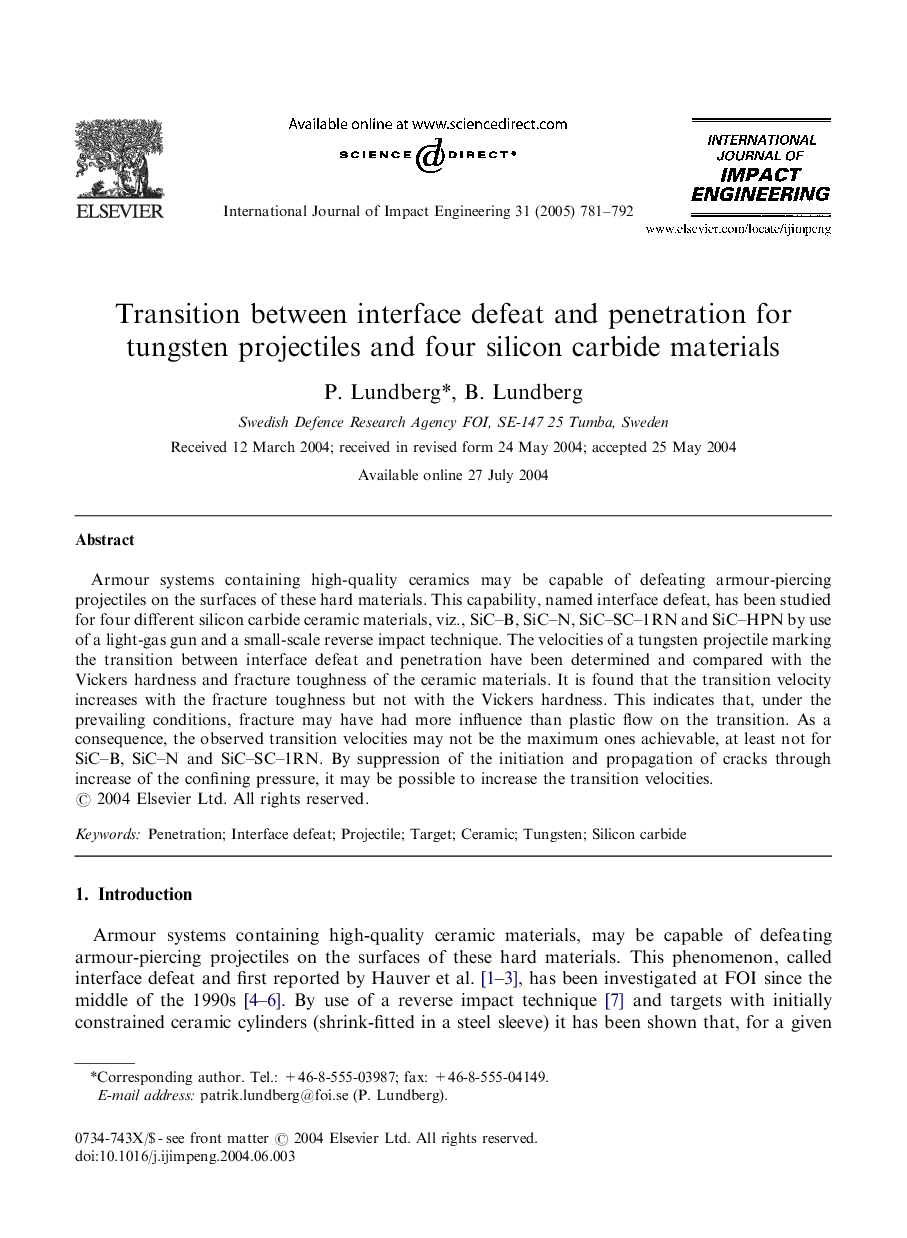| Article ID | Journal | Published Year | Pages | File Type |
|---|---|---|---|---|
| 9704707 | International Journal of Impact Engineering | 2005 | 12 Pages |
Abstract
Armour systems containing high-quality ceramics may be capable of defeating armour-piercing projectiles on the surfaces of these hard materials. This capability, named interface defeat, has been studied for four different silicon carbide ceramic materials, viz., SiC-B, SiC-N, SiC-SC-1RN and SiC-HPN by use of a light-gas gun and a small-scale reverse impact technique. The velocities of a tungsten projectile marking the transition between interface defeat and penetration have been determined and compared with the Vickers hardness and fracture toughness of the ceramic materials. It is found that the transition velocity increases with the fracture toughness but not with the Vickers hardness. This indicates that, under the prevailing conditions, fracture may have had more influence than plastic flow on the transition. As a consequence, the observed transition velocities may not be the maximum ones achievable, at least not for SiC-B, SiC-N and SiC-SC-1RN. By suppression of the initiation and propagation of cracks through increase of the confining pressure, it may be possible to increase the transition velocities.
Related Topics
Physical Sciences and Engineering
Engineering
Mechanical Engineering
Authors
P. Lundberg, B. Lundberg,
